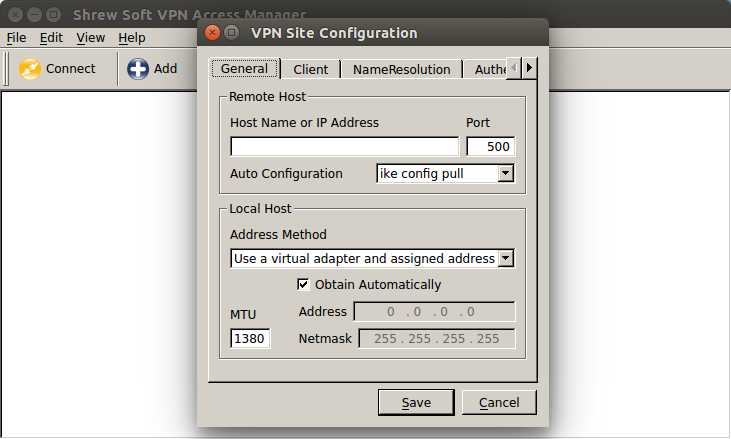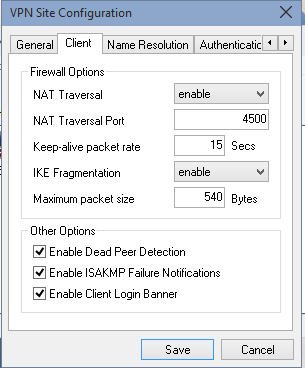

- #SHREW SOFT VPN NOT CONNECTING INSTALL#
- #SHREW SOFT VPN NOT CONNECTING UPDATE#
- #SHREW SOFT VPN NOT CONNECTING PASSWORD#
- #SHREW SOFT VPN NOT CONNECTING WINDOWS 7#
The official document that I can remember: this is the following (which only refers to this limitation regarding the ICMP)įor security purposes the security appliance does not support far-end interface ping, that is pinging the IP address of the outside interface from the inside network. Some things related to the ASA are well known but not well documented. Well, you can of course turn VPN on other interfaces, but to be honest, I never even tried to set up the VPN it otherwise than of multiple multiple external interfaces in the case of the ISP and in this case only for testing purposes. Cisco ASA allows to do? Order to packet - trace output is less to: My goal is to allow the connection of all other interfaces (inside the dmz and etc.) to the outside interface. When the user connects to the Internet on the outside interface, it works well.

I have 9.1 (3) version of Cisco ASA with remote access VPN set UP on the outside interface. You can see the config sections (starting with the first mention of the tunnel-group) as well as the pre-shared key ikev1 plaintext String. More system:running-config | b tunnel-group Remote VPN IPsec IKEv1 access are listed as groups of tunnel.
#SHREW SOFT VPN NOT CONNECTING PASSWORD#
Remote access VPN group name and passwordĬan someone tell me please the command to display a remote access VPN group name and the password on a firewall version 8.0 of ASA? Any help will be greatly appreciated. Then you can create a list of message to send the logs only for the connection/disconnection of the VPN user:

Here is a link to the email configuration when you log in to the ASA/PIX: I would like to get an email every time that a user login (and or disconnection) to the VPN.

I use a PIX 515E with: ASDM Version: 5,0000 51 PIX Version: 8.0 (4) and configure it with remote access VPN. You must create 2 profiles of connection here and match them with 2-group policy allowing access to 2 differernt resources (they can be multiple as well) How this is achieved, it is that you create a connection profile different for different users, associate a policy group and the title of each group policy, you have a split tunnelling access-list defined with entries of different hosts. Yes, you can configure split tunneling to allow a specific group of users access to specific hosts. Is this possible without a GANYMEDE or some other device? Thank you guys!
#SHREW SOFT VPN NOT CONNECTING INSTALL#
Can someone please explain this very important concept for benefit of many like me? Especially when the information on the documents like above as well as official ShrewSoft Linux install instructions don't seem to cover this.It is a way for a remote access VPN to allow some users access to "Host A, B, C" and other users to access hosts D, E, F? Basically, we want to have some users have access at home to a few servers and other users have access only to some other servers. Essentially this fix is overriding the default Linux kernel behaviour to check Reverse Path Forwarding, but with VPN, and route learned and installed, it already know that packet came from and will lead back the same interface. But how did this fix is not understood to me.
#SHREW SOFT VPN NOT CONNECTING UPDATE#
No issues with the windows based Shrewsoft VPN.įurther research indicated that I need to update the /etc/nf to change value to 0 from 1 for the following entries and then reboot.
#SHREW SOFT VPN NOT CONNECTING WINDOWS 7#
I have Shrewsoft VPN client working fine with Windows 7 and 10 and when I tried to use the same thru CentOS 6.8 desktop, it connected fine, tunnel is extablished, laptop gets correct IP address from a Cisco ASA firewall, and laptop routing table shows route to the office network added thru the tunnel interface, but I could not ping or pass any traffic to the office network.


 0 kommentar(er)
0 kommentar(er)
